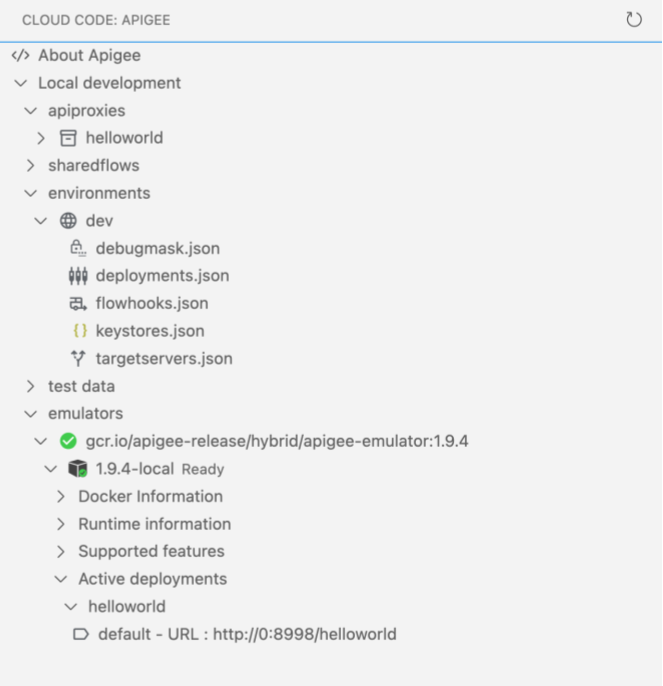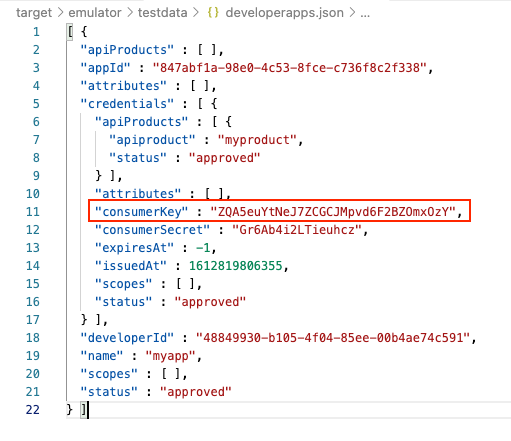本页面适用于 Apigee 和 Apigee Hybrid。
查看 Apigee Edge 文档。
![]()
按照以下部分中的说明测试 API。另请参阅管理 Apigee 工作区中的文件夹和文件。
确定 API 代理端点的网址
部署环境时,API 代理端点的网址将显示在模拟器部分的活跃部署下。

如需复制 API 代理端点的网址,请将光标悬停在网址上,然后点击 ![]() 。
。
API 代理端点的网址结构如下所示:
https://0:8998/shopping/cart/addItem
|_____||____________||______|
| | |
host+port basepath resource
默认情况下,主机和端口(流量)分别默认为 0 和 8998。
您可以在安装 Apigee 模拟器时定义端口,并在开发 API 代理时定义基本路径和资源值。
使用 curl 测试 API
要使用 curl 测试 API,请打开 Terminal 标签页,然后调用 API。
例如:
curl 0:8998/helloworld
使用 API 密钥进行身份验证
如果 API 要求基于 API 密钥的身份验证,请执行以下操作:
- 按照构建测试资源所述,构建并导出 API 产品、开发者和开发者应用测试资源。
在 Apigee 模拟器中,点击 Active test resources 部分中的 Active developer apps,然后复制 API 产品的
consumerKey值(不含引号),如下图所示。
根据 API 的要求,在 curl 调用中传递 API 密钥。例如,以下 curl 调用在 apikey 查询参数中传递 API 密钥:
curl 0:8998/helloworld?apikey=ZQA5euYtNeJ7ZCGCJMpvd6F2BZOmxOzY
